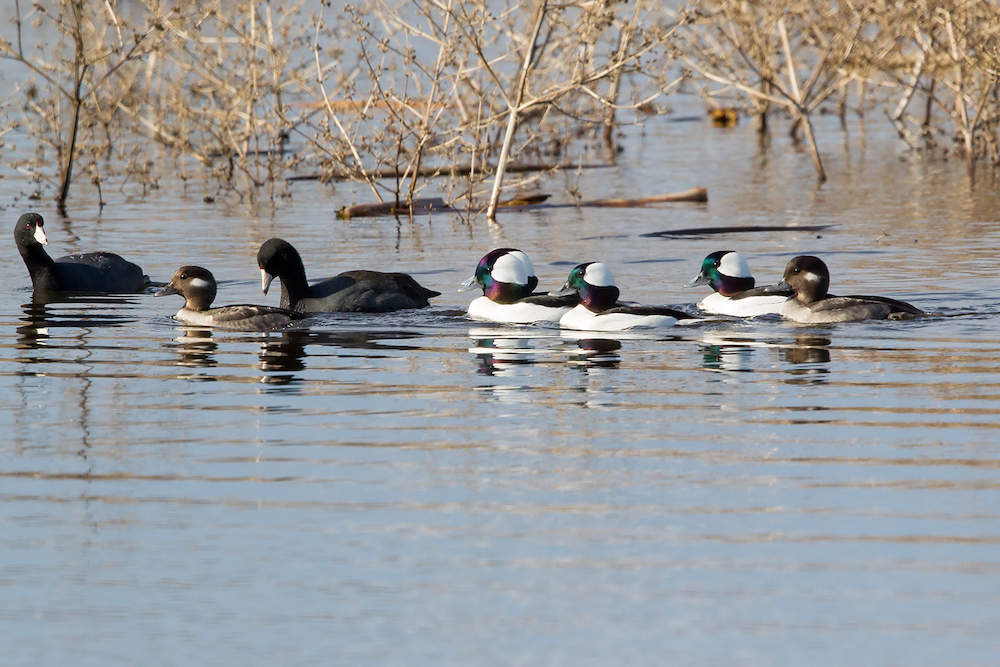The Fascinating Life of Coots
By Luke Matthews
In California, American Coots are often found in large flocks or intermixed with ducks and geese on flooded rice fields or wetlands throughout the winter. Despite their gregarious nature and close association with ducks, coots are not a waterfowl species. In fact, they are a member of the Rail family which is largely made up of more secretive and solitary species.

The diet of American Coots consists mostly of vegetation. They graze on grasses, forage on floating aquatic plants, or dive to get submerged aquatic vegetation. While they primarily eat vegetation, they have also been known to occasionally consume seeds and invertebrates.
American Coots typically build their nests over water and primarily breed in Canada and across the Prairie Pothole Region (PPR). While many coots build nests and raise their own young, they also engage in a somewhat unique breeding strategies known as Brood Parasitism. Using this strategy coots will lay their eggs in the nests of other coots as well as some over-water nesting duck species. Parasitism allows some individuals to dump the responsibilities of raising their young to others. However, since this is a wide spread practice among coot population they have developed a trick to recognize their own young and will reject parasitic chicks.

A second and even more interesting aspect of the American Coot life cycle is surrounding their migrations. While it is well known that coots migrate between their summer and winter grounds, not much is known about their actual migrations. It has been suggested that coots primarily migrate at night and may migrate at high altitudes. To date there have been very few documented sightings of coot migrations and essentially no comprehensive studies on the phenomenon.
The next time you are out in the Sacramento Valley and notice a flock of coots don’t be too quick to dismiss these prolific but unique and somewhat mysterious birds.
Luke Matthews is the Wildlife Programs Manager for the California Rice Commission






